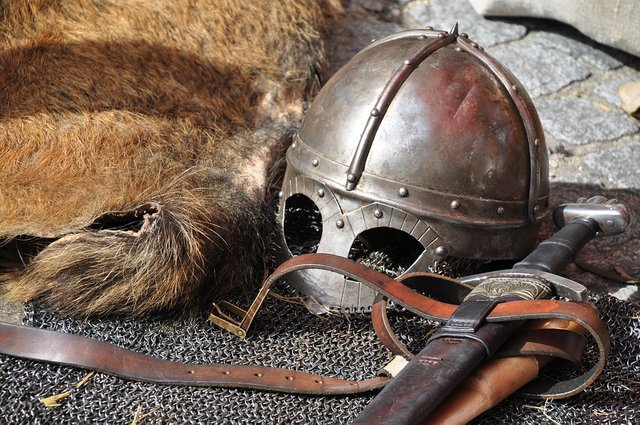HISTORY OF THE TEMPLAR KNIGHTS

The members of this order, called Knights Templar, were active and fundamental participants in the struggle of the Crusades. Some of the members were not part of the fighting forces, so they dedicated themselves to work in the economic infrastructure, innovating financial techniques that were necessary for the construction of many fortifications in Europe and the Holy Land. The first motivation for which the Order of the Knights Templar was born was the series of attacks promoted by bandits against the pilgrims who undertook the trip to the Holy Land. Now, this idea was motivated by two veterans of the First Crusade, the French Hugues de Payens and Godofredo de Saint-Omer.
Around 1119, King Baldwin II of Jerusalem gave the few members of the nascent order a seat on the Temple Mount. They were only about nine gentlemen, had few financial resources and survived on donations. In the first months of the order they had as a symbol two knights mounted on a single horse, emphasizing the poverty of the Order. Later, Saint Bernard of Clairvaux, one of the main figures the Church and a nephew of André de Montbard. He intervened so that 1129 at the Council of Troyes, the Order was officially approved by the Church.
Ten years later with great popularity and admiration, Pope Innocent II decided that the Order be exempt from several local laws. For example, the Knights Templar could enjoy freedom to move through the territory, could pass freely across all borders, were not required to pay taxes, and were exempt from civil authority but not religious. With this they managed to gain important wealth, the Order grew rapidly. The Templars were required to support the advance in the key battles of the Crusades. For example, one of the most famous victories was in 1177 during the Battle of Montgisard, where some 500 Knights Templar helped in the downfall of Saladin's army.
The Templars established financial networks, acquired large tracts of land, both in Europe and the Middle East, therefore, built churches and castles, the latter were dedicated to the manufacture, import and export of their own fleet of ships. Scholars dare to claim that the Order of the Knights Templar were the first to create a multinational company in the world. Throughout its existence began to develop a rivalry with the Knights Hospitallers and the Teutonic Knights, Christian military orders. This rivalry added to the internal disputes weakened the Christian positions, politically and militarily.
The end of the Order occurred when it was in the hands of the French noble the Grand Master, Fray Jacques de Molay. One of the reasons was the loss of Jerusalem in 1244. Jacques received a proposal from Pope Clement V, basically the idea was that the Order of the Templars will be integrated into the other military orders under a single king, despite the Pope's insistence Jacques rejected such proposal. On June 6, 1306 he was called to Poitiers to urge him to accept, a request that was denied. Finally, the fate of the Order ended.
Pope Clement V, besieged by military threats and the pressure of King Philip IV "the Beautiful", issued a papal bull called Pastoralis Praeminentiae on November 22, 1307, which exhorts all Christian kings in Europe to stop all the Templars and seize their assets. Now, at the Council of Vienne in 1312, the Pope published a series of papal bulls, including Vox in excelso, which officially marked the end of the Order. During this period many knights were tortured.
In that line, Grand Master Jacques de Molay, and his companion Godfrey de Charney, preceptor of Normandy, were blamed for heresy, although they were always innocent. However, they were condemned to be burned at the stake in Paris on March 18, 1314. With the last of the leaders of the Order dead, it was much easier for the remaining Templars to be arrested and tried in virtue of the pope's investigation.
This legendary order was a group of warrior monks, who showed great political, social, military, economic and religious organization, all crossed by a clear ethical code. On this order a lot of legends and stories have been created that have given him a lot of popularity. Such is the case that the Da Vinci Code film contains scenes recorded in Temple Church. Another of the great feats of the order was the construction of a kind of bank, where they made transfers of money from places to others, also served as intermediaries in business.